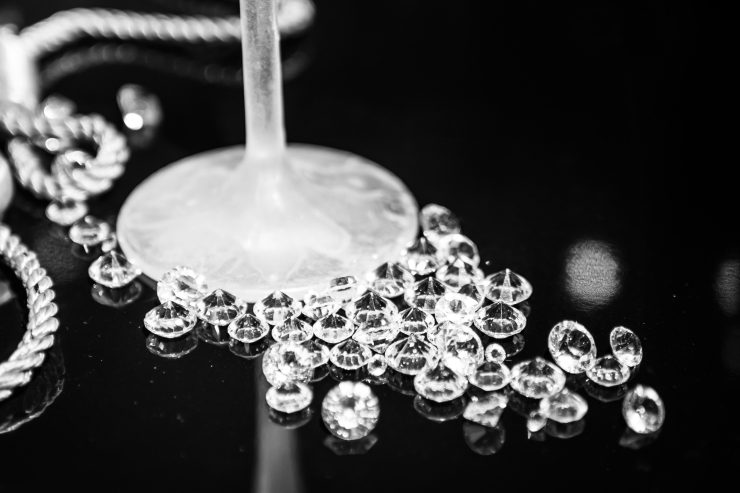Understanding the Fundamentals of Diamond Value
Before one can determine the optimal moment to sell natural diamonds, it is crucial to understand the fundamental factors that determine their value. Diamonds are graded based on the “4 Cs”—carat, cut, color, and clarity. However, market prices are not based solely on these qualities. Demand from consumers, economic conditions, availability of supply, and competition from synthetic diamonds also influence pricing. Unlike gold or silver, diamonds are not traded on commodities exchanges, which means their valuation lacks a standardized global pricing mechanism. Instead, pricing is influenced by dealer networks, auction results, and market sentiment. Moreover, fashion trends and consumer preferences can shift the desirability of certain cuts or types of diamonds, affecting resale value. A seller must therefore take into account not only the intrinsic qualities of their diamond but also the broader market forces at play when deciding on timing.

Historical Price Trends in the Diamond Market
While diamonds have often been portrayed as timeless investments, historical pricing trends reveal a more nuanced story. Over the last few decades, natural diamond prices have shown periods of both stability and volatility. For example, during the global financial crisis of 2008, diamond prices fell sharply due to reduced consumer spending. Conversely, from 2010 to 2014, prices saw a resurgence driven by strong demand from emerging markets, particularly China and India. The COVID-19 pandemic initially led to a drop in sales, but the subsequent recovery saw prices climb again, aided by supply chain disruptions and increased demand for luxury goods. Monitoring these historical price movements can provide useful insights. Sellers should be cautious not to generalize price trends across all diamonds, however. Larger, higher-quality stones often appreciate differently than smaller, commercial-grade ones. An understanding of historical cycles, inflationary effects, and global economic drivers is essential when assessing whether current market conditions are favorable.
The Influence of Global Economic Conditions
The macroeconomic environment plays a significant role in the value of natural diamonds. During periods of economic growth, consumers tend to spend more on luxury items such as diamond jewelry. In contrast, economic downturns or recessions typically lead to weakened demand and declining prices. Interest rates, inflation, and consumer confidence indices can all affect diamond demand. For instance, when inflation rises, some investors might seek hard assets like diamonds, but unlike gold, diamonds lack uniform liquidity, making this a speculative hedge at best. Moreover, in times of high interest rates, financing large purchases becomes more expensive, which can reduce demand. Currency fluctuations also play a role, particularly for sellers or buyers operating across borders. A strong U.S. dollar, for instance, can make diamonds more expensive for buyers using weaker currencies, potentially lowering international demand. Consequently, sellers must remain aware of global economic indicators and financial news to time their sales effectively.
Seasonality and Consumer Behavior
Seasonality is another critical factor to consider when planning to sell natural diamonds. The diamond market often experiences peak periods of consumer activity, especially around holidays and cultural milestones. For example, demand for engagement rings surges around the winter holiday season—particularly between November and February—and again around Valentine’s Day. Retailers often prepare months in advance for these spikes, meaning they may be more actively sourcing diamonds in the months preceding these events. Additionally, certain markets such as India and China have seasonal events, including wedding seasons and festivals, that create surges in demand. Selling a diamond during or shortly before these high-demand periods may result in better offers, especially from jewelers looking to replenish inventory. However, this can also mean increased competition among sellers, which could impact pricing depending on supply levels. Understanding the cyclical nature of consumer behavior helps maximize timing strategy for those seeking optimal returns.
The Role of Industry Developments and Synthetic Diamonds
The diamond industry has undergone significant transformation over the past two decades, particularly with the advent of lab-grown diamonds. These synthetic alternatives offer similar visual properties at a lower cost, presenting stiff competition for natural stones, especially in the lower and mid-tier segments. While high-quality, rare natural diamonds still command premium prices, the growing acceptance of lab-grown stones is placing downward pressure on resale values for more common natural diamonds. In addition to competition, changes in mining operations, such as mine closures or new discoveries, can affect supply levels and thus influence prices. For instance, the closure of major mines like Australia’s Argyle has impacted the availability of certain diamond types, particularly pink diamonds, leading to a rise in their market value. Sellers must stay informed about such industry developments, as they can either enhance or erode the value of their holdings. Keeping abreast of trade publications, auction reports, and diamond price indexes can provide timely and relevant information.
Appraisal Timing and Understanding Diamond Liquidity
Getting a professional appraisal is a critical step when preparing to sell a natural diamond, but the timing of that appraisal also matters. Appraisal values can fluctuate over time in response to shifting market conditions, and sellers should ensure that the valuation reflects current market realities. It is advisable to seek appraisals from reputable gemologists or certified appraisers who follow standardized grading systems such as those established by the Gemological Institute of America (GIA). Additionally, sellers must understand that the appraised value is not necessarily the price they will receive in a sale. The resale value is often lower, especially when selling to dealers or jewelers who need to resell the stone at a profit. Moreover, diamonds are not considered highly liquid assets, particularly in comparison to stocks, bonds, or even precious metals. Selling a diamond can take time, especially if one is hoping for a premium price. Therefore, sellers should plan ahead, allowing for enough time to appraise, market, and negotiate a sale.

Choosing Between Selling Channels
The channel through which a seller chooses to offload their diamond plays a significant role in the final sale price and timing. Options include private sales, auction houses, local jewelers, online marketplaces, and specialized diamond buying services. Each channel offers advantages and drawbacks. Auction houses can provide high exposure and attract competitive bidding, particularly for rare or high-value diamonds, but they charge commissions and may require waiting for scheduled events. Local jewelers offer immediacy and convenience but may offer lower prices due to their resale margins. Online platforms provide broader market reach and transparency but involve shipping risks and require trust in digital transactions. Some sellers may also opt for consignment arrangements, though these involve delayed payments and may not guarantee a sale. Ultimately, the chosen selling channel should align with the seller’s goals, whether they prioritize speed, maximum value, or minimal risk. Timing a sale for when a particular channel is most active or competitive can also yield better results.
Monitoring Auction Trends and Benchmark Pricing
Auction houses like Sotheby’s and Christie’s regularly report on the state of the diamond market through their sales results, and these reports offer valuable insights for potential sellers. By analyzing auction catalogs, realized prices, and bidder demand, one can gain an understanding of what types of diamonds are currently in demand and which are losing popularity. For example, fancy colored diamonds, especially pink and blue hues, have recently performed exceptionally well, particularly in larger carat sizes. By contrast, smaller commercial-grade diamonds may see inconsistent interest depending on supply. Sellers can use this data as an informal benchmark to estimate potential pricing or to time their sale when a similar diamond type is receiving attention. Tracking the prices of comparable stones over a few auction cycles helps identify whether market sentiment is trending upward or downward. Additionally, auction previews can serve as educational tools, allowing sellers to evaluate how their diamond fits into the broader competitive landscape.
Tax Considerations and Financial Planning
Another key factor in timing the sale of a natural diamond is tax planning. In many jurisdictions, the sale of a personal asset like a diamond may be subject to capital gains taxes if the sale price exceeds the original purchase price. Understanding these implications ahead of time can affect when and how you choose to sell. For instance, in a year where one has lower overall taxable income, realizing gains on a diamond might result in a lower effective tax rate. Conversely, it might make sense to offset gains with losses from other investments to reduce tax liability. Consulting with a tax advisor or financial planner before selling a valuable stone is often prudent, particularly if the diamond represents a significant portion of one’s net worth or estate. Sellers should also consider reinvestment options, whether they plan to convert the diamond into cash, invest in another asset, or use the funds for personal expenditures.
Strategic Patience and Emotional Considerations
Finally, sellers should recognize that emotional attachment and urgency can cloud judgment when it comes to selling natural diamonds. Many people inherit diamonds or receive them as gifts, which can complicate the decision to sell from an emotional standpoint. Rushing into a sale due to financial pressure or sentimentality may result in suboptimal timing and lower returns. Conversely, excessive hesitation in hopes of a price peak that may never materialize can also lead to missed opportunities. Strategic patience involves balancing personal circumstances with external market data to make informed, rational decisions. If current conditions are not favorable—due to low demand, saturated markets, or personal timing issues—it may be wise to delay the sale. On the other hand, if market indicators align and the seller has clear financial goals, moving forward can be advantageous. Sellers should create a written strategy that includes value assessments, market research, and an ideal timeline, then revisit and adjust that plan as necessary.